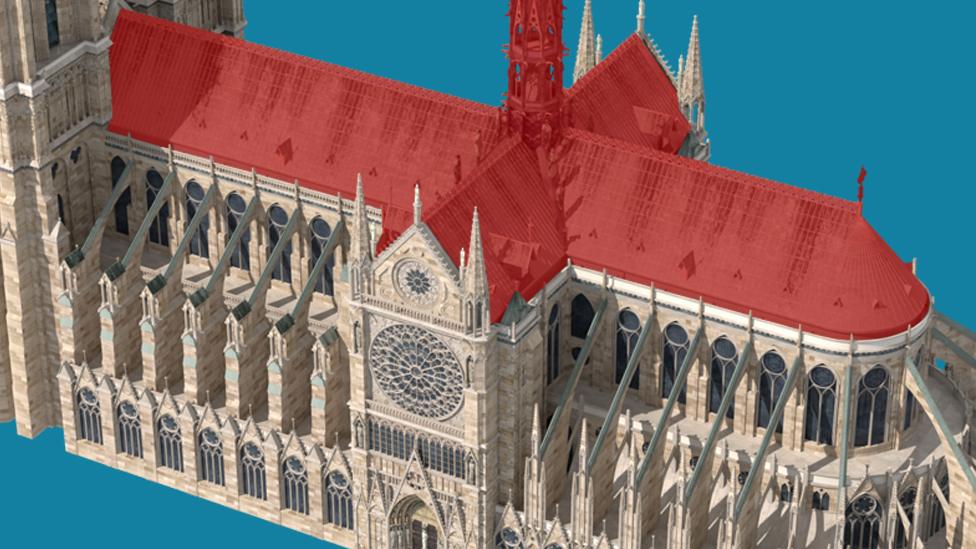Notre-Dame fire: Booksellers urge Hunchback publishers to donate
- Published
Tom Hollander reads an extract from Victor Hugo's novel
French booksellers are urging publishers of the novel The Hunchback of Notre-Dame to donate funds to help rebuild the burnt-out cathedral.
Two bookstore owners are calling on publishers of Victor Hugo's iconic book to join the funding campaign.
A fund launched to rebuild the fire-ravaged Gothic cathedral is expected to surpass €1bn ($1.1bn; £870m).
More than €800m has already been raised since the monument was engulfed by flames on Monday evening.
Now Amandine Ardouin and Antoine Bonnet, whose bookshops are based in Paris, are asking other sellers and publishers to do their part.
A share of their income from sales of Hugo's novel, first published in 1831, will be pledged to the restoration project, they told French media.
"It is heartbreaking to make money on this misfortune, so we decided to redistribute these funds to the cathedral repair work," Mr Ardouin told Livre Hebdo.
Within hours of the devastating blaze, Hugo's epic rocketed to the top of Amazon's best-seller list. A French version of the book, published in 1975 by Le Livre de Poche, remained in first place on the best-seller list of Amazon France on Wednesday.
Prices range from €4.60 for the pocket edition, to €43.04 for the paperback, according to the Amazon listing for Le Livre de Poche's releases.
One paperback edition, published by Penguin Classics in 1978, is listed as "temporarily out of stock" on the e-commerce giant's website.
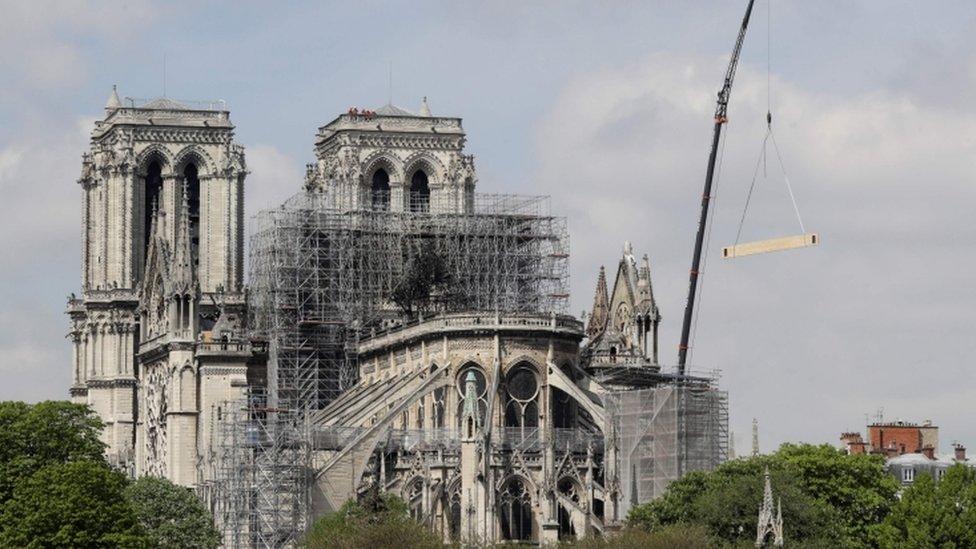
Scaffolding surrounds Notre-Dame cathedral two days after the devastating fire

Other editions by the Folio Society (1998), Flammarion (1984) and other publishers are still available to buy on Amazon and other websites.
Speaking to Le Figaro, Mr Ardouin said he would like publishers to emulate his "symbolic act" by donating to the cause.
"We would like Folio, Pocket book, Flammarion, who sell this book in pocket format, to do the same," he told the paper. "Literature can save Notre-Dame."
The BBC has approached Penguin, Folio Society, Flammarion and Le Livre de Poche for comment on the calls to donate funds but is yet to receive a reply.
What is the Hunchback of Notre-Dame about?
Hugo's classic tells the tale of Quasimodo, a deformed and half-blind bell-ringer who falls in love with a beautiful young gypsy woman named Esmeralda.
Ashamed of his appearance, he admires her from afar, longing to meet her from the isolated confines of Notre-Dame's bell tower.
A chain of events unfolds in which Quasimodo attempts to protect Esmeralda from his jealous master, Archdeacon Claude Frollo, who also lusts after her. The story culminates in their tragic deaths.
Literary critics argue that Hugo's main motivation for writing the book was to draw attention to the then-dilapidated cathedral and the value of the Gothic architecture.
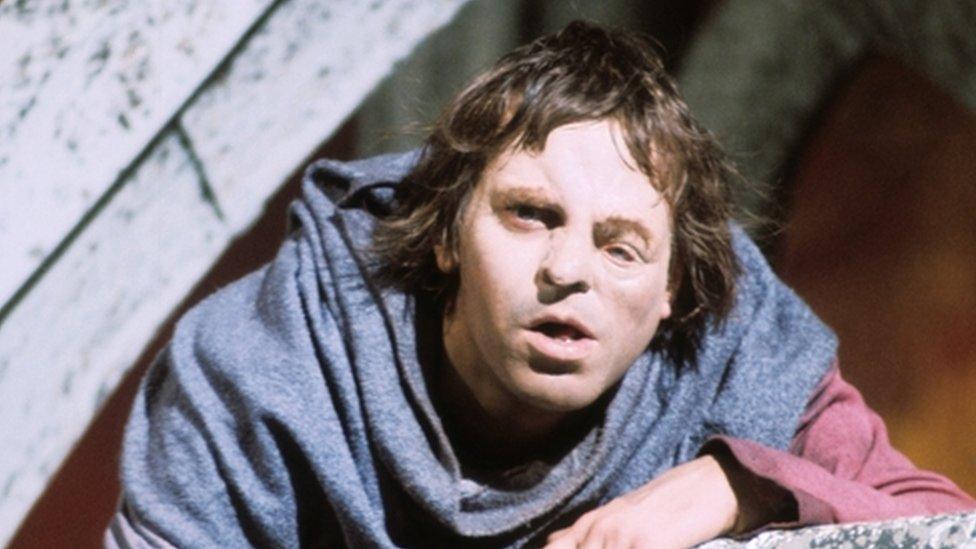
Warren Clarke as Quasimodo in the 1970s TV series The Hunchback of Notre-Dame

Why is the novel important to the cathedral?
Prior to the publication of Hugo's book, sections of Notre-Dame cathedral had fallen into disrepair.
He began writing the story, also known as "Our Lady of Paris", in 1829, using the building as the backdrop for his dramatic tale.
At the time, parts of it lay in ruins, having sustained serious damage during the French Revolution.
Hugo's enormously popular novel - set in Notre-Dame's heyday in the 1400s - is partly credited with saving it.
Allow X content?
This article contains content provided by X. We ask for your permission before anything is loaded, as they may be using cookies and other technologies. You may want to read X’s cookie policy, external and privacy policy, external before accepting. To view this content choose ‘accept and continue’.

Its roaring success emboldened the historical preservation movement in France, leading to the formation of the Commission on Historical Monuments.
In 1841, architects Eugène Viollet-le-Duc and Jean-Baptiste Lassus led major renovations at Notre-Dame, restoring it to its former glory.
"A commission formed in 1837, in part due to the success of Victor Hugo's novel the Hunchback of Notre-Dame," Dr Emily Guerry, lecturer in medieval European history at the University of Kent, told the BBC.
"That's when a collective group of people in Paris and across France fell back in love with the monument."
Colin Jones, a professor at Queen Mary University of London specialising in the history of Paris, told the BBC Hugo "played an enormous part in the cause of restoration of medieval monuments in the 19th century".
He said the restoration of Notre-Dame cathedral was "in some ways closely associated" with Hugo's famous novel.
- Published17 April 2019
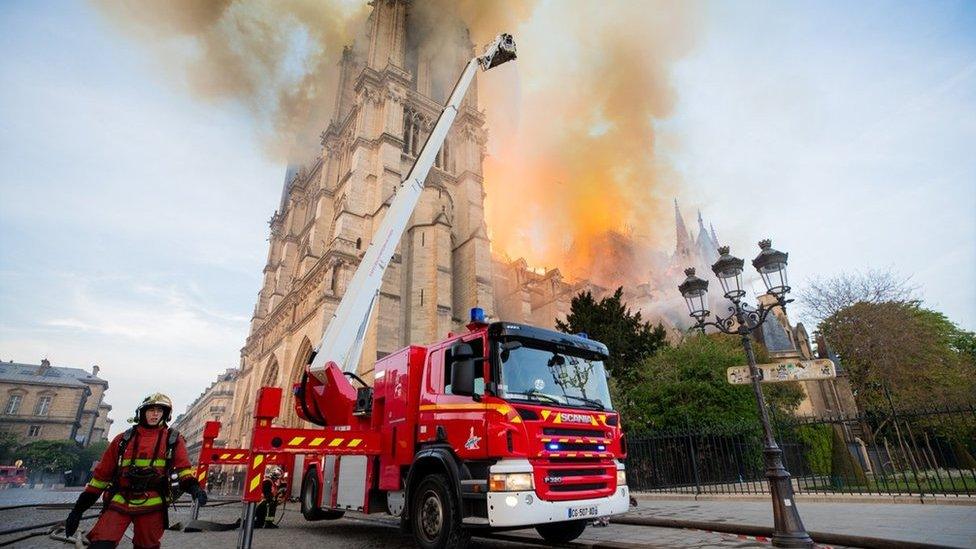
- Published17 April 2019
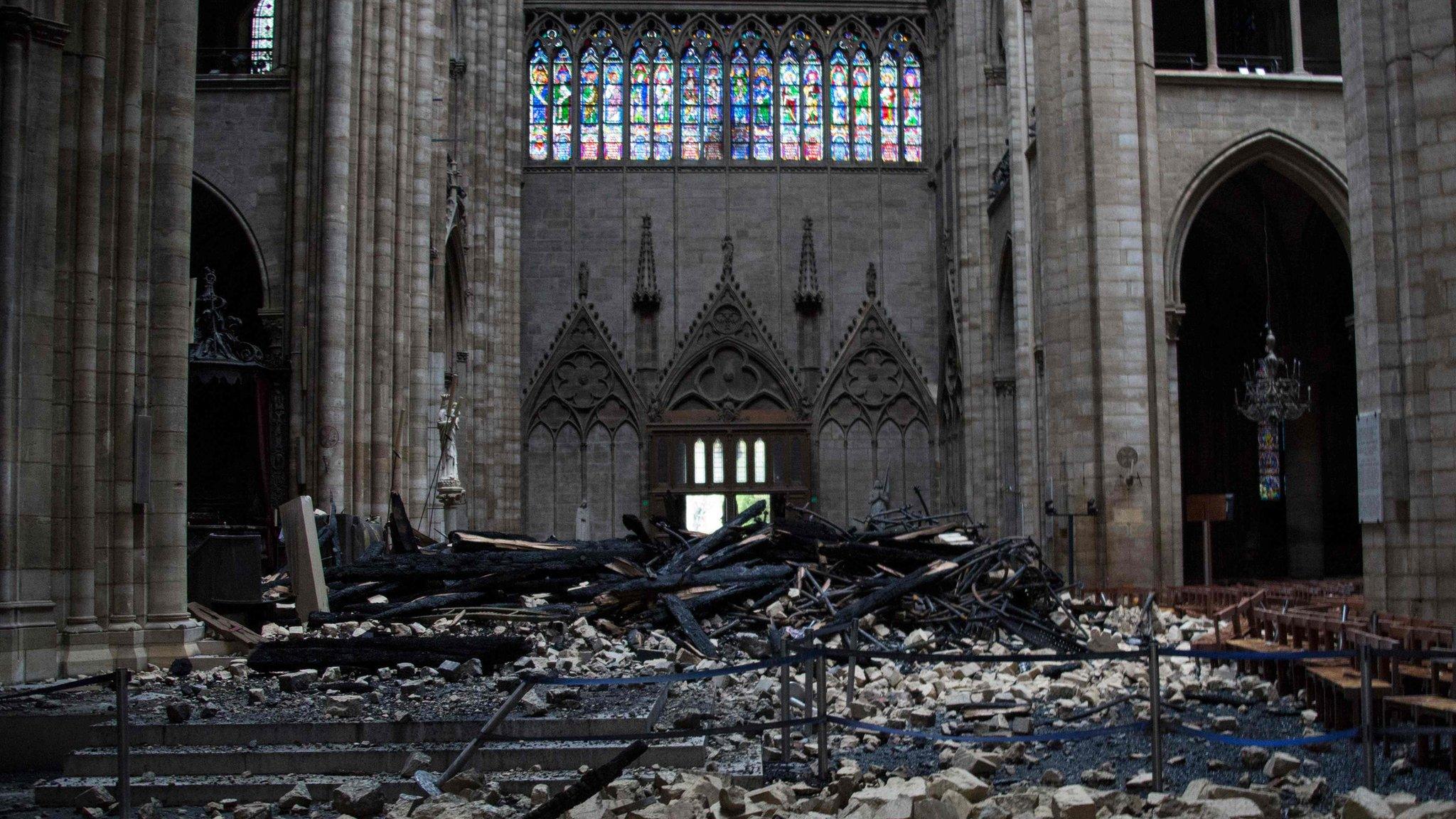
- Published16 April 2019
